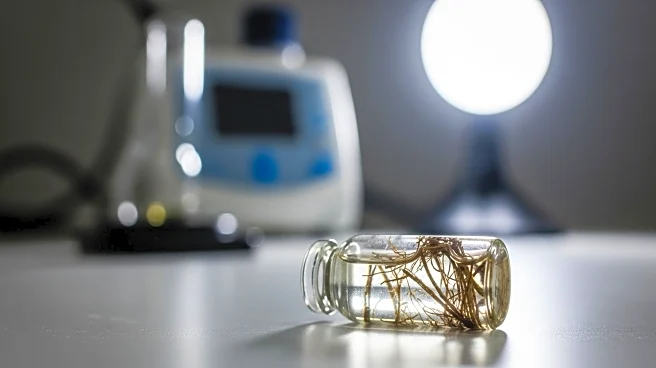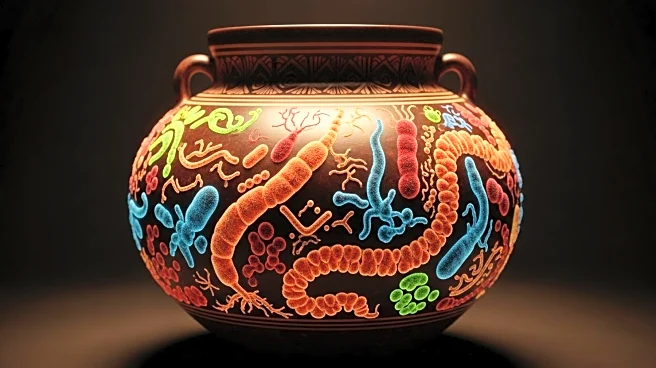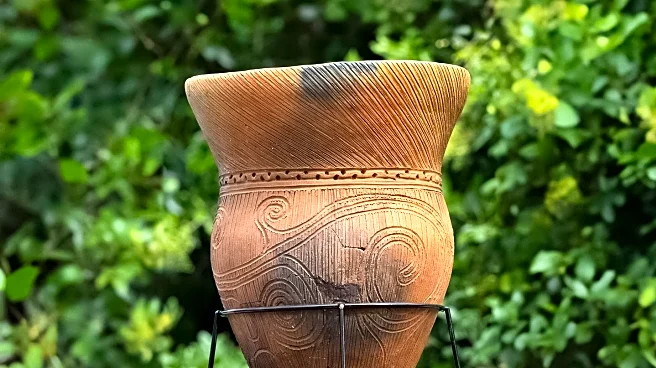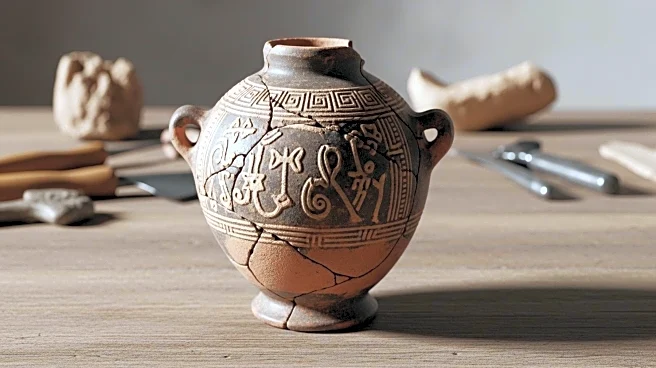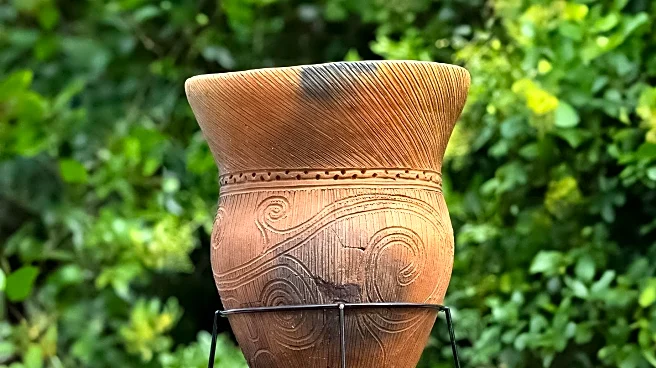What is the story about?
What's Happening?
Recent research has demonstrated the effectiveness of epoxy resin in preserving organic residues in archaeological soils. The study compared various preservation methods, including epoxy resin, polyester resin, and traditional storage techniques, to assess their impact on amino acids, proteins, and fatty acids in archaeological samples. Epoxy resin impregnation was found to significantly slow down the degradation of amino acids and maintain protein integrity, outperforming other methods such as polyester resin and simple dehydration. The research also highlighted epoxy resin's ability to preserve unsaturated fatty acids, which are sensitive indicators of preservation quality. These findings suggest that epoxy resin impregnation offers superior protection for organic residues, maintaining both the quantity and structural integrity of proteins and fatty acids over extended periods.
Why It's Important?
The preservation of organic residues in archaeological samples is crucial for accurate historical analysis and species identification. The study's findings underscore the importance of using effective preservation methods like epoxy resin impregnation to maintain the integrity of biological materials. This has significant implications for archaeological research, as well-preserved samples can provide more reliable data for understanding past environments and human activities. The ability to retain diagnostic peptide markers and fatty acids is particularly valuable for species identification and functional protein studies, which are essential for reconstructing historical diets and ecological conditions. The research highlights the limitations of traditional preservation methods, advocating for the adoption of advanced techniques to enhance the quality of archaeological investigations.
What's Next?
The study suggests further exploration into the use of epoxy resin for preserving a wider range of archaeological materials, including bone fragments and other organic residues. Researchers may investigate the long-term effects of epoxy resin impregnation on different types of samples to establish standardized protocols for archaeological preservation. Additionally, the findings could prompt a reevaluation of current preservation practices in museums and research institutions, potentially leading to the adoption of epoxy resin as a preferred method. Collaboration between archaeologists and material scientists could drive innovation in preservation techniques, ensuring that valuable historical data is protected for future analysis.
Beyond the Headlines
The research raises ethical considerations regarding the preservation of archaeological samples, emphasizing the need for responsible handling and storage to prevent degradation. The use of advanced materials like epoxy resin could transform preservation practices, offering new opportunities for interdisciplinary collaboration. This development may also influence cultural heritage policies, encouraging the integration of scientific advancements into conservation strategies. As preservation techniques evolve, there may be broader implications for the accessibility and interpretation of historical data, impacting educational and cultural initiatives worldwide.
AI Generated Content
Do you find this article useful?
